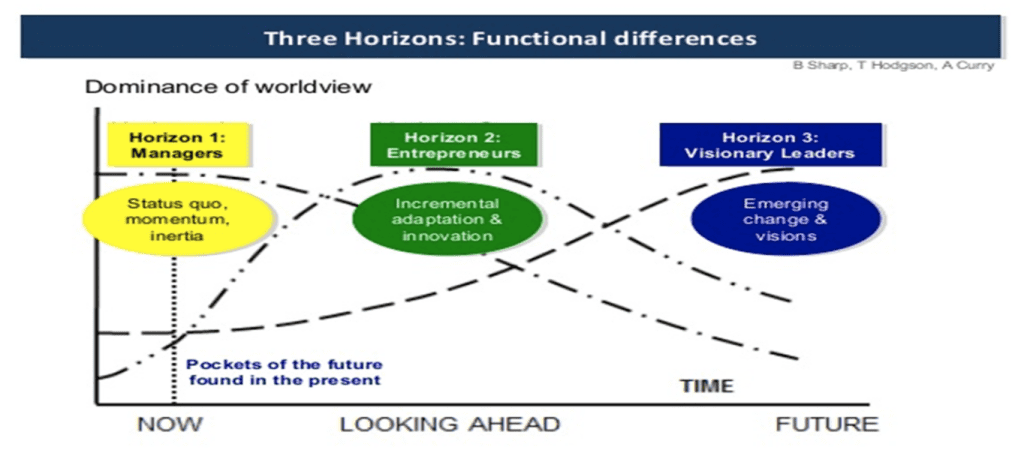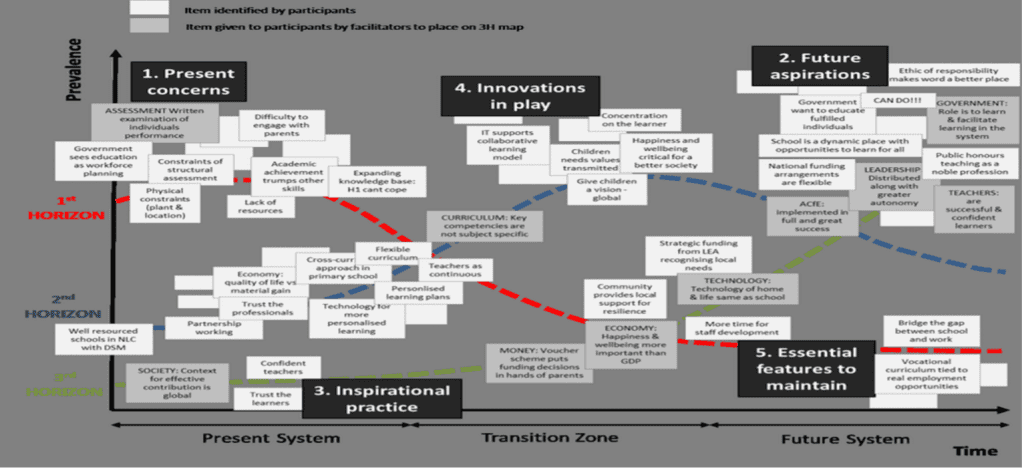– Bernie Kelly –
Be clear on your fitness for the horizons.
Right now the industry is transitioning on multiple horizons.
Right now the industry is transitioning on multiple horizons.

Susan, recently hired by the Board to lead a transformative agenda, shares her frustration with me that despite the successful engagement of the senior leadership, including her Executive and their direct reports in the strategy, there has been little movement.
Andrew, the CFO, agrees with Susan of the good work done on the vision and strategy, however is feeling real pressure over the end of month results which have been hit by delayed stock (impacting budgeted activity) and asks to be excused.
Amanda, the COO, is openly fatigued and shares the huge workload she and her teams have worked through to continue delivering high service.
Josh, the Strategy & Innovation Director, bubbles with enthusiasm for the various initiatives they have piloted through the last year. He also summarises the various disruptive players that he follows across the industry and the pros and cons of their work.
Working in organisations through industry transition is complex.
Leaders add to the complexity when they do not provide clarity of where the different work that is being undertaken fits in to the overall transition planning.
When this is not clear at the leadership level, it magnifies across the organisation and out into partner networks.
This 3 Horizons model, developed by Bill Sharpe, is useful for seeing the views of the future, and how prevalent they are over time.
• Horizon 1 – current context and conditions; the dominant system at present. It represents ‘business as usual’. The focus is maintaining stability, and the mindset is that of the manager.
• Horizon 3 – transformative emerging changes, ideas about possible futures, and visions of preferred futures. The focus is on transformation and disruption, and the mindset is that of the visionary.
• Horizon 2 – actions taken in the present to resist change, to adapt to change, or to build on change. At some point the innovations become more effective than the original system – this is a point of disruption. Clayton Christensen called it the ‘innovator’s dilemma’ – should you protect your core business that is on the wane or invest in the innovation that looks as if it might replace it? The focus is on creating and managing change, and the mindset is that of the entrepreneur.
• Pockets of the future found in the present. Those innovations that just seem so far off beam, so out there.

“The future is already here – it’s just not very evenly distributed.”
~ William Gibson (science fiction writer)
When extended leadership teams can position their present concerns versus future aspirations and essential features of current work to remain, there is a step change in transition planning clarity.

When we clearly see the horizons at play, we can also consider our fitness across those horizons.
I am on a mission to see more positive transitions than people and organisations suffering from being disrupted in this decade of accelerated change.
Bernie

